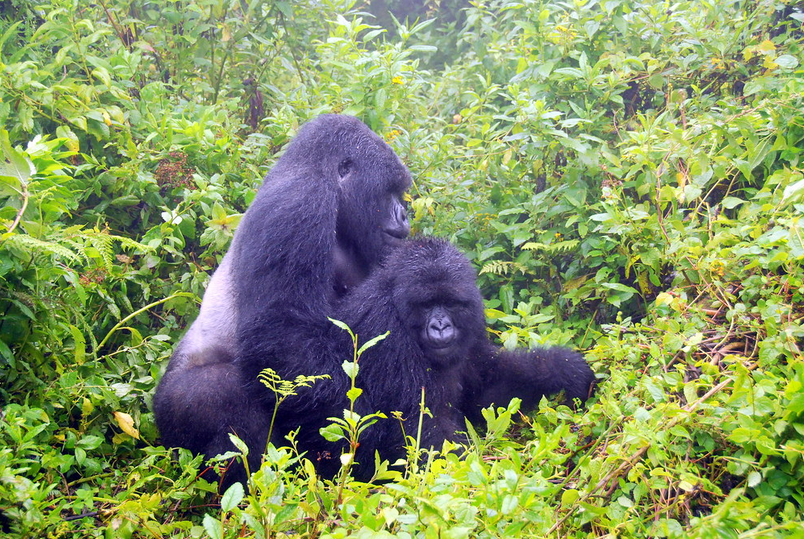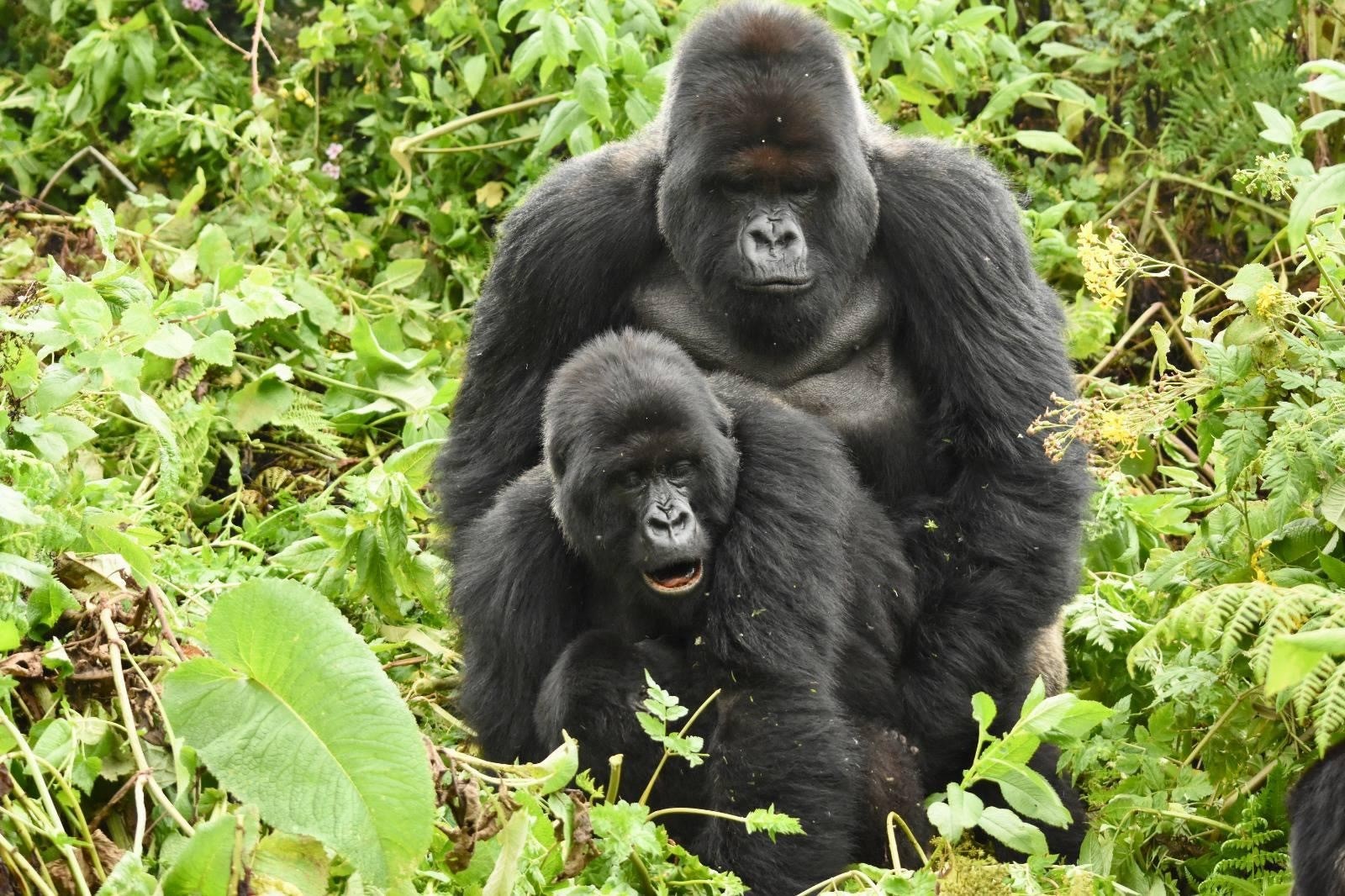
Awe-Inspiring Reproduction and Mating Habits of Mountain Gorillas
Awe-Inspiring Reproduction and Mating Habits of Mountain Gorillas
Mountain gorillas present some of the most awe-inspiring reproduction and mating habits in the wild. For creatures that are closely related to humans, it is not surprising that they also breed all year round. Compared to humans, female mountain gorillas reach sexual maturity earlier-between 7 and 8 years but reproduction officially begins by 10 years old. Their male counterparts begin reproducing between 13 and 15 years old, having reached sexual maturity by 11 to 13 years.
Normally, one offspring is produced by the female gorilla during each delivery, although incidences of twins have also been evidenced in some gorilla families. Surprisingly, these creatures have a repeated reproductive cycle of 28 to 33 days and after the first ovulation, it will take another three to four years for females to breed another baby. The Estrus in females happens for 1-2 days each month and regardless of the silverback numbers within the family, only the leader/dominant silverback has exclusive rights for breeding.
These endangered Great Apes are generally polygamous in nature, owing to the fact that the dominant silverback is able to mate with different female gorillas in his family. Given the fact that he is the only one with the right of breeding, it is, therefore, his responsibility to cater for the sexual needs of each female gorilla. Any subordinate silverback that is not okay with this decision/or arrangement either challenges the leader for the highest position in the hierarchy or leaves to start his own family. When on heat, the females follow dominant silverbacks, although there is no physical evidence of this phenomenal period in their lives. The male is lured through uninterrupted eye contact, lip-puckering and if he doesn’t notice, the female gorilla gets closer and even touches or hits the ground to garner attention.
In most cases, it is difficult to tell when the female mountain gorilla is expecting a baby, owing to their large stomachs from foraging. However, some of them evince swollen knuckles for the period they are pregnant. Like humans, the gestation period of these Giant Apes is 8.5 months and as earlier mentioned, deliveries happen after 3-4 years thus it can be concluded that they have low reproductive rates. This is one of the reasons why their population is endangered. You will be surprised that during birth, a baby gorilla weighs almost half the total mass of a human baby. Gorilla infants weigh between 1.8 and 2 kilograms, with pale-gray skin with just little dark fur on their heads and backs. Interestingly, most births take place during the night. Given their small size and fragility, baby gorillas cling on their mothers with a strong grip from hands and feet. Not only that, mother gorilla will in the start offer help to the baby, when it comes to holding on her stomach or chest. These youngsters enjoy playing with older siblings or fellow infants within their age bracket while wrestling, tumbling, climbing trees or walking in synchronization through the jungles.
The infant mortality rate in mountain gorillas is 40%, thus female gorillas will most likely have one offspring in 6-8 years. Because of this, chances are high that only 4-6 offspring will be produced by each female in a lifetime. When it comes to their care, baby gorillas keep in constant contact with their mothers for the first six months and are weaned at 2.5-3 years old. While they are born smaller than human babies, infant gorillas begin bouncing, smiling and playing at 8 weeks while crawling starts at 9 weeks old. Manipulation and discovering their surrounding starts from 3 months of age.
Baby gorillas begin standing by 20 weeks then walking by 34 weeks but from 6-7 months, they are able to independently climbing and riding on their mothers’ backs. At this point, they can feed at short distance from mothers. At juvenile, it is difficult to differentiate between male and female gorillas.
While the dominant silverback is known to be an aggressive and the most serious member of the family, he is surprisingly very gentle and patient when it comes to young gorillas. There has also been a case of the dominant silverback sharing a nest with an orphaned gorilla.



